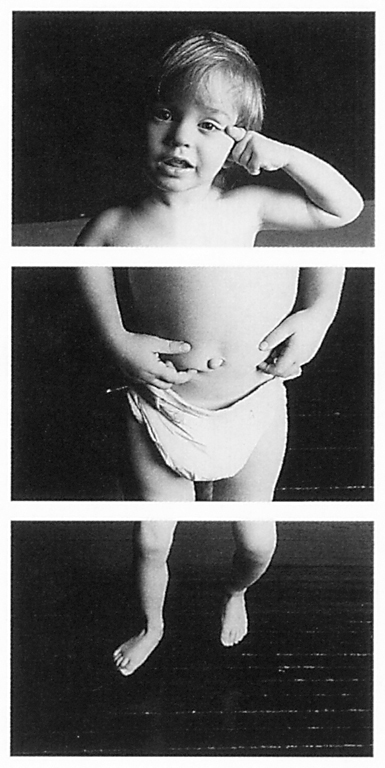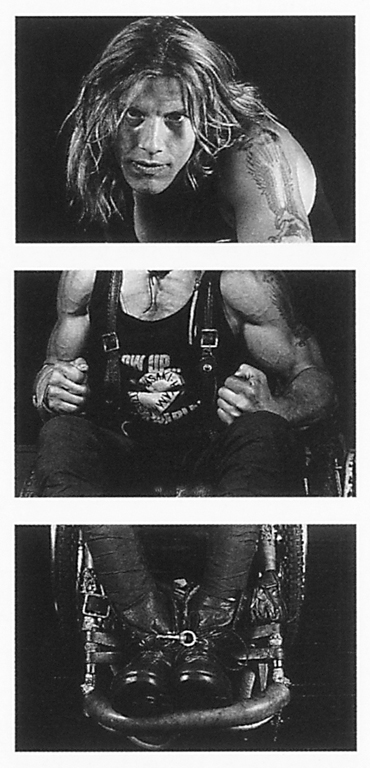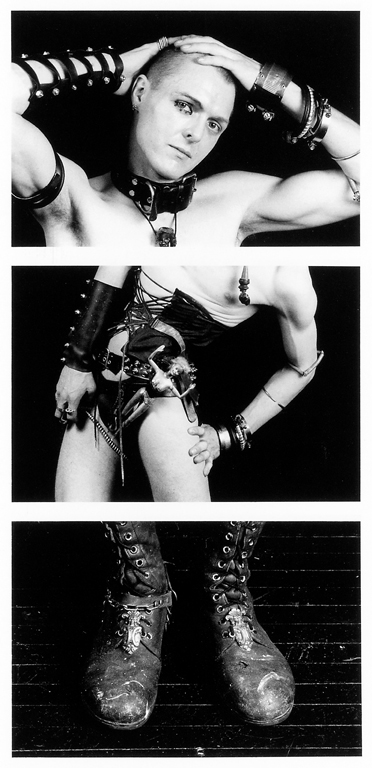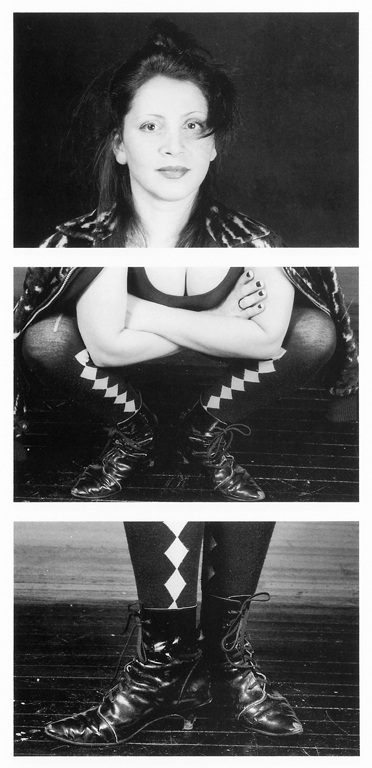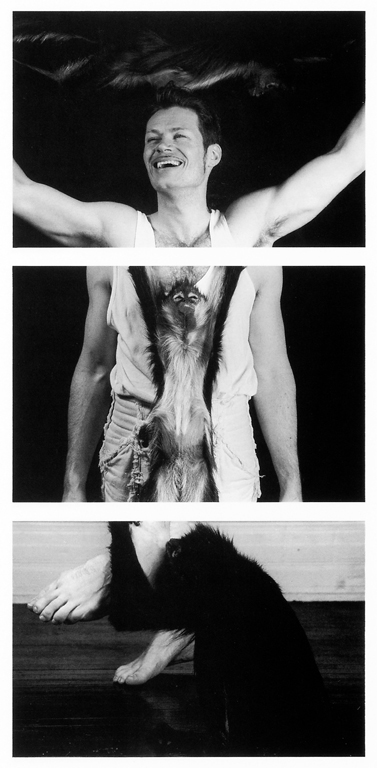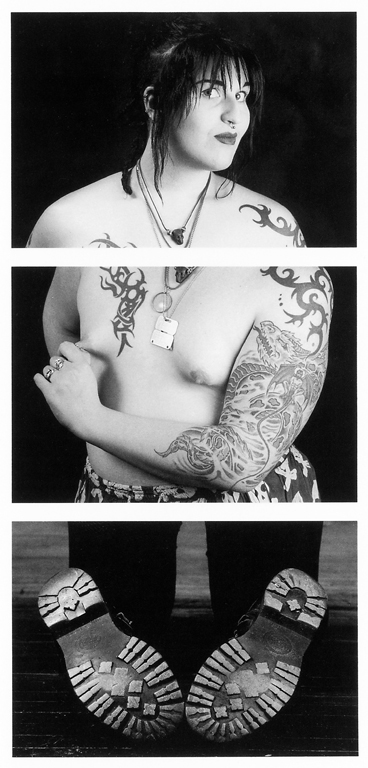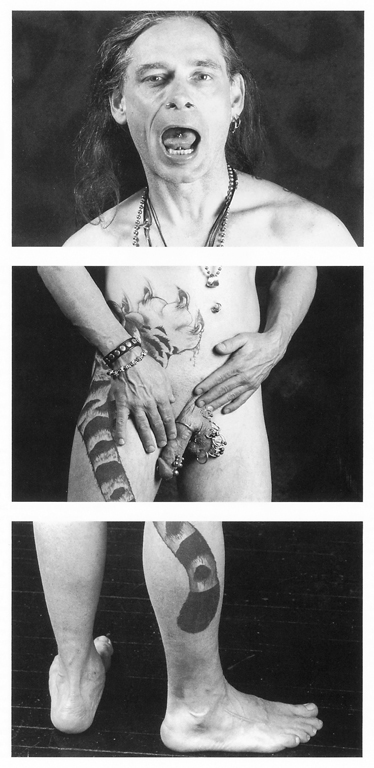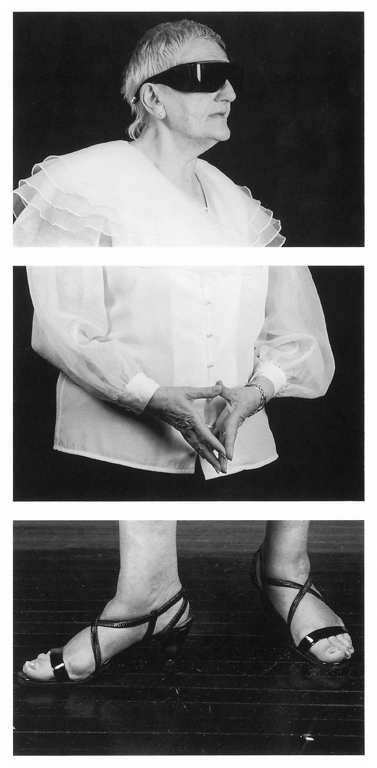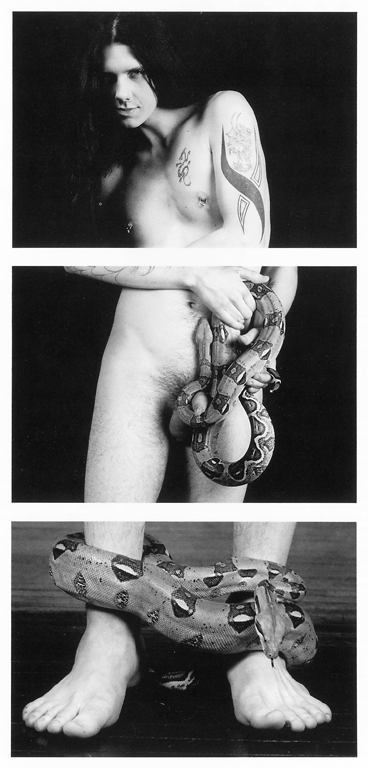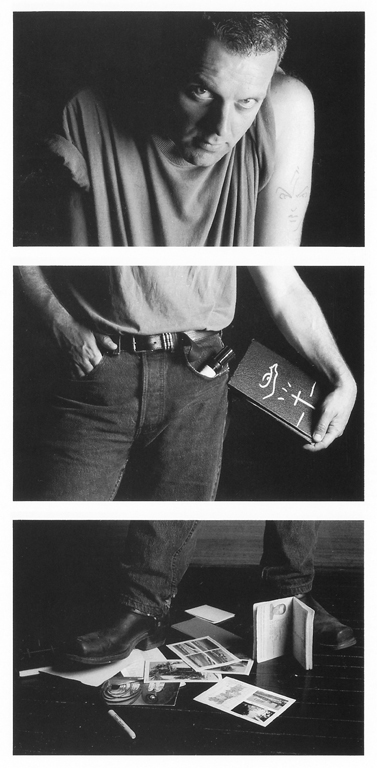[Fall 1994]
by Robert Legendre
Linda Dawn Hammond‘s work – in keeping with the artist herself – is clearly unusual. At times, her photography and the manner in which it is articulated appear to take origin as much in a cry of anxiety as in a state of surprise. Whatever the nature of the subject she records, Hammond denies all pretense of objectivity.
Her regard is overtly exclusive and personal. Treating her subjects with intelligence and sensitivity, she presents us with an oeuvre imbued with discreet humour (some have qualified it as sinister). The artist works with either conventional prints – satisfying the voyeurism in us – or an assemblage of precise and structured elements, grouped in series which, with Hammond, become a constant work in progress.
I first became aware of this remarkable work during the second edition of Montreal’s le Mois de la Photo, in September 1991. At the time, photographs from the series Personal Needs1 were being shown at the maison de la culture Marie-Uguay2. Although bantering, the work was nonetheless critical of the media and its users.
In this series, the artist becomes her own subject, whimsically and satirically commenting on the human ideal disseminated by the world of classified ads. Prior to this project, Hammond had never been inclined to photograph herself or to let herself be photographed by others. With Personal Needs, her portrayal is undercover, travestied with costumes, masks, jewels and make-up. One may sense a similar distance and reserve both in the manner in which she chooses her themes and the way in which she photographs the people who inhabit them.
It was later on, during the Presentation of Photographer’s Portfolios – held in September 1993 as part of Montreal’s third edition of the Mois de la Photo -, that I first encountered the superb series Three Body Part (reproduced in part in this issue).
The series groups sequences of vertically shaped triptychs that juxtapose three different viewpoints -of horizontal format – taken from a single point of view, on a same axis, but at varying angles and distances.
In her sequence-portraits, out of shyness perhaps, Linda Dawn Hammond photgraphs only those subjects that “naturally” find their way into her universe. This series is therefore exclusively comprised of photographs of people carefully chosen by the artist, of subjects she has tamed or, conversely, who have tamed her.
Three Body Part originates with the sequence-portrait that the artist made of her son Mishka, in 1988. Mishka, she recalls, just as many small children, was earnestly intrigued by his bellybutton. Satisfied with this specific type of shot and the efficiency of the set-up, Hammond decided to systematically apply the same process to her portraits of friends or familiar faces.
With its penetrating sensitivity, with its ability to convey a sense of lucidity and experience, Three Body Part exposes us to a rather gripping aspect of a turn-of-the-century urban society. The Mishka subject of 1988 (p.8) is a far cry from the Charlie subject (reproduced above) of 1992, or the Ed subject of 1994. However, the sequential organization principles of all three photographic elements, as well as of their respective compositional components (head, trunk, feet), remain unaltered in the artist’s current series.
The knowing look of Hammond’s photographic subjects readily reveals the artist’s passion for her work. And it is this very bond between photographer and subject that discloses the true nature of both participants. Here, the photographic process reflects at once a shamanic ritual, an essentially social activity, and the precision of a lancet. Although Hammond’s rituals cover an extensive territory, her choices are selective. Wishing to preserve the ease of familiarity and proportions of human scale, she purposefully restrains her gesture to a scant number of players and themes.
The works we chose to reproduce here are particularly revealing: of Hammond’s steadfastness with regard to her work, of the essence of her material explorations, and of the very basis of her commitment as an artist. And to think that these are but a pale reflection of the rich and varied contents of her portfolio.
Translated by Jennifer Couëlle
1 Mois de la Photo à Montréal catalogue, September 1991, p. 15.
2 The maisons de la culture are cultural centres administrated by the cultural service of the city of Montreal.
Just as many of life’s more meaningful encounters seem to come about, Linda Dawn Hammond simply happened upon her initial interest in photography. She studied journalism at Ottawa’s Carleton University, and film and photography at Toronto’s Ryerson Polytechnical Institute. She also holds a diploma from Concordia University, Montreal, where she studied photography. The artist exhibits her work both in galleries and alternative spaces.
Trained as an artist and photographer at heart Robert Legendre has been editor and co-director of CVphoto for the past few years. He has taught photography for a number of years, and is currency teaching at the Collège Marsan de Montréal.

